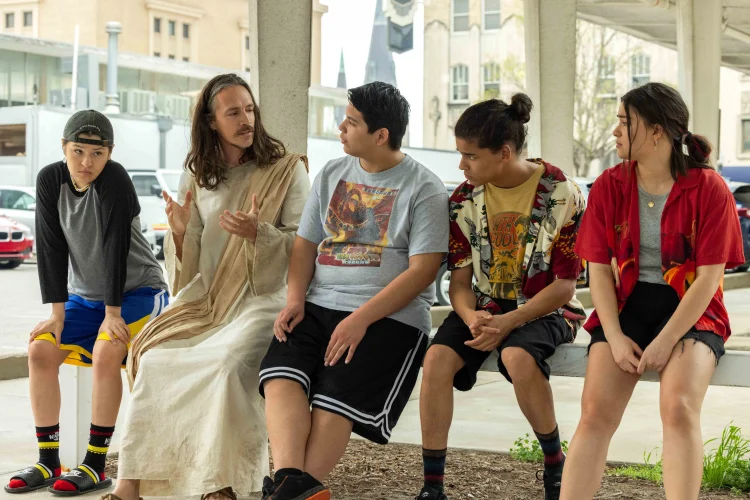The third and final season of “Reservation Dogs,” the critically acclaimed FX series co-created by Sterlin Harjo and Taika Waititi, has premiered on Hulu, marking the beginning of the end for this powerful coming-of-age tale. Set on a reservation in Oklahoma, the show follows a group of Indigenous teens as they navigate their way through the complexities of family, friendship, and grief.
Sterlin Harjo, one of the creators of the series, is not surprised by the show’s conclusion. He acknowledges that “Reservation Dogs” is a story about people going through transitions, particularly the teenage characters who are experiencing a pivotal and transformative moment in their lives. The show’s narrative was always intended to have an ending, and Harjo believes it’s essential to let the characters grow and evolve, rather than prolonging their journey indefinitely.
From the outset, “Reservation Dogs” centers around Elora, Bear, Willie Jack, and Cheese, four friends coming together after the loss of their best friend, Daniel. Daniel’s dream of traveling to the California coast becomes their shared mission. At the end of Season 2, they finally fulfill his wish, but California is only a temporary stop on their journey. The heart of the story lies back in Oklahoma, where the magic of “Reservation Dogs” unfolds.
As the third season begins, Bear finds himself on a solo journey back home after missing the bus. Disappointed by the absence of his father, Bear grapples with issues he had set aside in previous seasons, contemplating his future and who he wants to become. The encounter with a character played by Graham Greene provides a glimpse of what life could be like without the support of his friends and community.
“Reservation Dogs” continues to push boundaries in its storytelling approach. The third season opens with William Knifeman, played by Dallas Goldtooth, recapping the story so far. Breaking the fourth wall, Knifeman directly addresses the audience, adding an element of unpredictability and challenging the notion of a reliable narrator.
Throughout the season, the series delves into dark and powerful themes, including the painful history of U.S. Indian border schools. The show seizes the opportunity to shed light on historical truths and provides a deeply truthful portrayal of Native cultural traditions’ suppression in the 19th and 20th centuries.
The upcoming episodes will further explore Elora’s journey and her quest to uncover the truth about her father. Harjo promises a rollercoaster of emotions, with heartbreak, laughter, and love on the horizon. As the characters face new challenges, viewers can expect the same dance of tones and storytelling excellence that has defined the show.
Although “Reservation Dogs” is reaching its conclusion, Sterlin Harjo hints at the possibility of the series’ universe living on in different forms. While it won’t be a direct continuation, Harjo envisions exploring the characters’ futures and life paths in potential sequels or spin-off projects. The possibilities are open, and Harjo’s creative vision extends beyond the boundaries of the current series.
As the show wraps up, Harjo and his team are proud of the impact they’ve made. “Reservation Dogs” resonates with audiences due to its unique storytelling and portrayal of Indigenous experiences. The series stands as a testament to the power of authentic storytelling, and Harjo believes they have achieved their artistic goals. While bidding farewell to the characters is bittersweet, the end of “Reservation Dogs” is a fitting conclusion to a remarkable journey that has left a lasting impression on both creators and viewers alike.



















